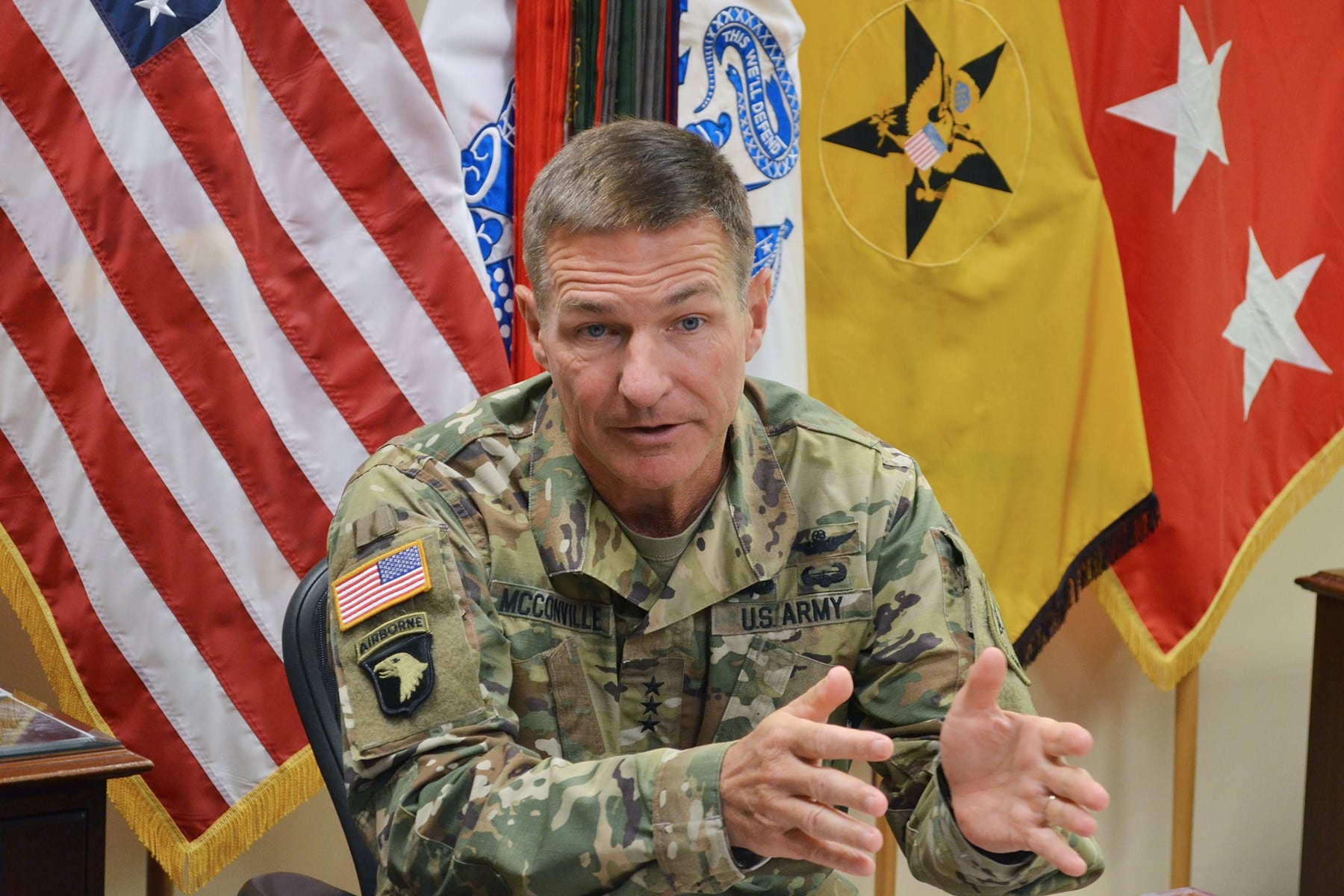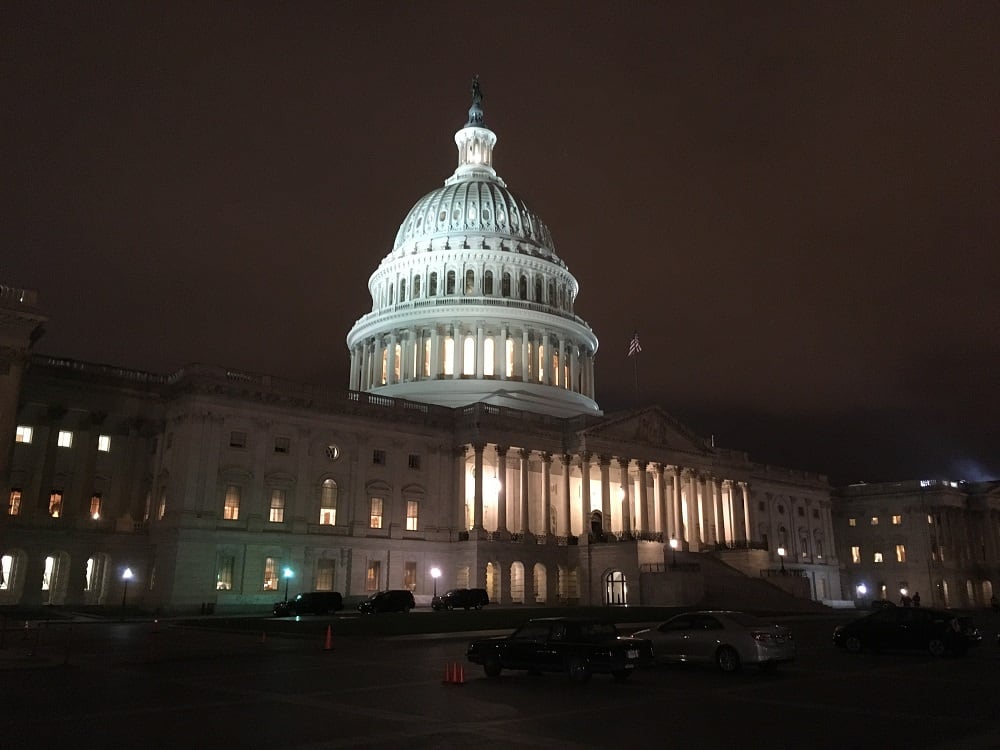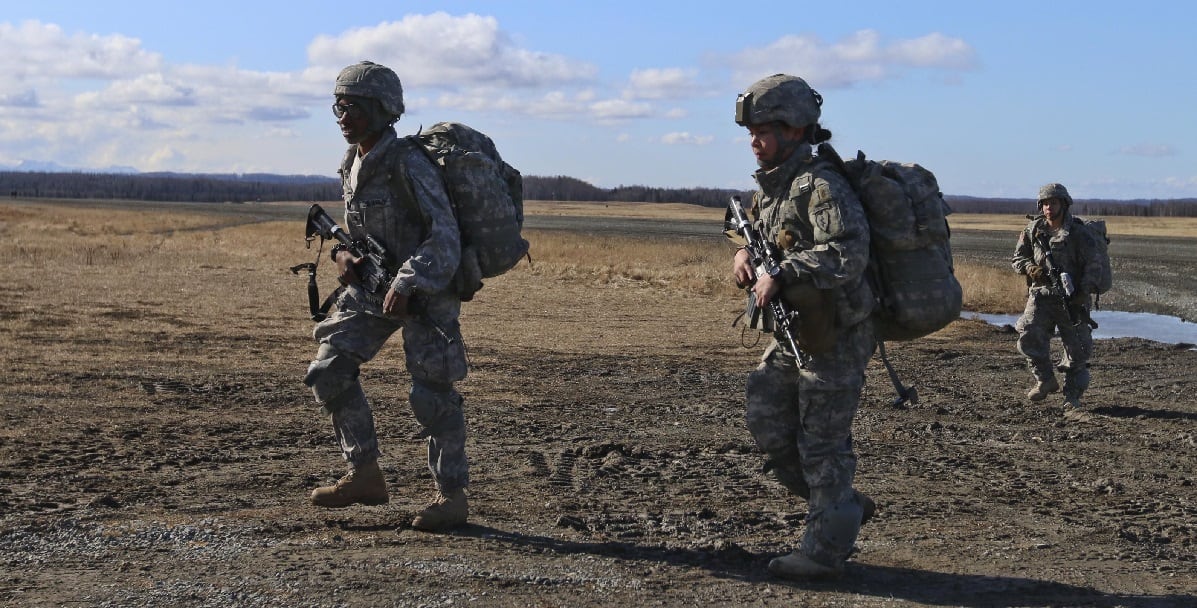WASHINGTON — More women are serving in the Army than ever before, the Army’s vice chief of staff said Monday, down to every brigade combat team battalion.
Since the service lifted the final ban on women in direct-combat units in 2016, more than 600 women have joined infantry and armor units, Gen. James McConville told an audience at the Army Women’s Foundation Summit on Capitol Hill.
“Every single infantry, armor and artillery battalion in every single active-duty brigade combat team has women assigned,” he said.
The Army is still tracking percentages as a gauge of its success with its Leaders First integration initiative, which transferred female officers and noncommissioned officers into the 82nd Airborne Division and 1st Cavalry Division, ahead of accepting graduated one-station training graduates last summer.

And, he added, 10 of those women are sporting Ranger tabs, since the course opened to women in 2015, with seven more in training now.
“I’d like to see the day in the near future where we no longer need to count percentages of individuals,” he said.
But women who do step up still face discrimination and, at the extreme, sexual assault from their fellow soldiers, and multiple audience members took the microphone to ask McConville about the Army’s efforts to prevent violence and mistreatment.
McConville’s three children are active-duty soldiers, he said, including his daughter.
“She says it’s better than it used to be, but it’s no where near where it needs to be,” he said.
RELATED

McConville encouraged survivors, men and women, to report, to give the Army an opportunity to prosecute predators to the fullest extent of the law.
“But they have to report, or we’re not going to fix it, as we go forward,” he said.
McConville likened sexual assault to friendly-fire negligence on the job, and suggested that commanders treat it the same way.
“If you’re on a range and you accidentally shot someone, and you hurt them, we would hold you accountable,” he said. “And we’d go through this whole process, and your fellow soldiers would look at you and say, ‘How could you do this to our fellow soldiers?’”
To combat assault and harassment within units, organizations need to start looking at them in the context of unit cohesiveness, he added.
“Sexual harassment and sexual assault is worse, because it’s intentional. It’s intentional fratricide,” he said. “Why would you commit intentional fratricide against one of your fellow soldiers?”
Similarly, the service’s Sexual Harassment and Assault Response and Prevention program should focus less on instilling fear of consequences in soldiers.
“What we have to do is get people to think beyond that,” he said. “What we need in the Army is cohesive teams of trusted professionals.”
Harassment and assault should be treated as readiness issues, he said.
“If you don’t treat them with dignity and respect, if you’re harassing them and assaulting them, what kind of organization are you going to have?” he said. “You’re an American soldier. You treat everyone with dignity and respect because that is the right thing to do.”
The Army has been encouraged by an increase in reporting numbers but a decrease in incidents over recent years, though conviction rates for both assaults and whistleblower retaliation remain low.
“We’re not there yet. We’ve got a long way to go,” McConville said.
Meghann Myers is the Pentagon bureau chief at Military Times. She covers operations, policy, personnel, leadership and other issues affecting service members.




